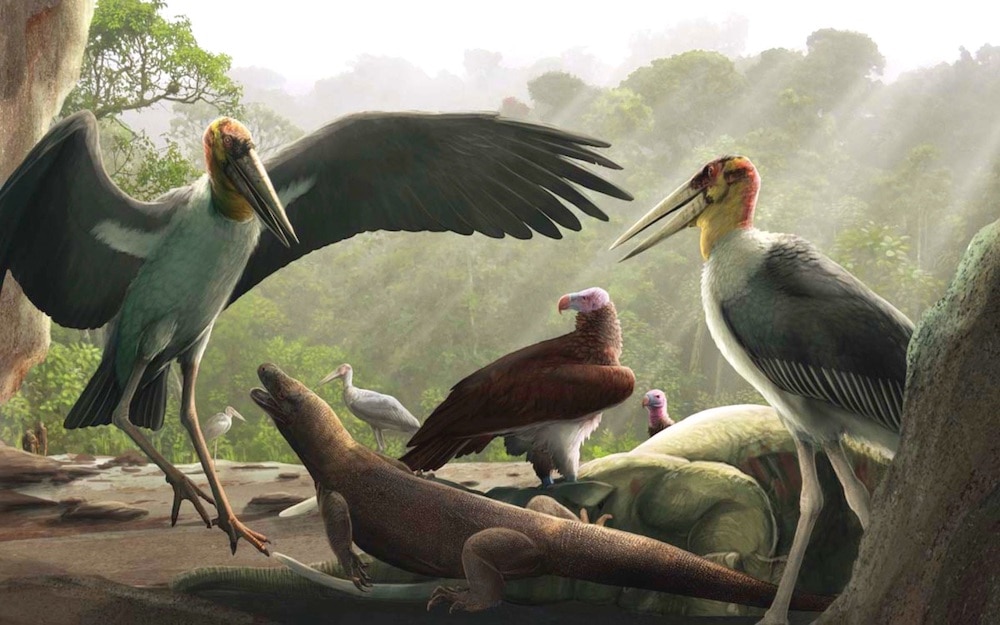Create a free profile to get unlimited access to exclusive videos, sweepstakes, and more!
The ancient world looked a lot like Middle-earth, with 'hobbit' humans and giant birds
It's like in the great stories, Mr. Frodo.

In Alfred Hitchcock’s 1963 horror film The Birds, modern humans find themselves under what appears to be a coordinated attack from various species of birds. The movie was partly inspired by real events which occurred two years earlier when populations of birds exhibited bizarre behavior including crashing into cars or homes. It was ultimately revealed they had been exposed to a toxin.
While fear of birds is a relatively common phobia in the modern day, tens of thousands of years ago things might have been wholly different. Analysis of fossil remains on the oceanic island of Flores, dating back at least 70,000 years, paints a picture which looks increasingly like something out of Lord of the Rings, complete with giant birds, dragons, oliphants, and tiny people.
Scientists from the University of Bergen, University of Wollongong, and Lakehead University recently investigated 21 bones of an extinct species of giant stork known as Leptoptilos robustus or the Giant Marabou Stork. The species was previously described from four bones, but the relatively small sample size left a lot of open questions, including whether or not they were capable of flight. Now, with the benefit of additional remains, some of those questions have been answered. The team’s results were published in The Royal Society Open Science.
The remains of the Giant Marabou Stork are impressive in their own right and suggest a bird which stood roughly six feet tall with impressively built wings. Indeed, the new analysis suggests they were capable of active flight, which likely contributed to their spreading across the region. What is perhaps more interesting, and which helps paint the picture of a Tolkienesque assemblage of animals, are the other remains found in association with the storks.
Alongside them, researchers found other large birds including vultures, as well as predatory Komodo dragons, and the diminutive Homo floresiensis, commonly referred to as hobbits. Interestingly, the stork bones show no evidence of predation from the dragons or any indication of butchery by tiny hominins. Their close proximity, coupled with no evidence of aggression, suggests these animals may have maintained a symbiotic relationship. Researchers suspect they may have followed other large animals across the region in order to opportunistically feed on discarded carcasses.
Adding another Middle-earth wrinkle to the story is the type of carcasses giant storks, Komodo dragons, and even H. floresiensis were seeking. The study indicates there might have been competition over the carcasses of Stegodon, an extinct relative of modern elephants.
There is evidence that H. floresiensis hunted Stegodon and used tools to process their meat. They may have been helped in their hunting endeavors by the fact that Stegodon was itself relatively small, with an estimated shoulder height of 1.3 meters. The vultures and giant storks might then have swooped in to pick off any leftover remains. It would have been a strange sight, looking upon this unusual collection of tiny people, slightly larger elephants, huge lizards, and comparatively massive birds all living — or dying — together.
The remains give us a window into a time which was wholly different from our own while still maintaining a measure of familiar similarity. As Tolkien was famous for repeating, all things fade and diminish with time and this fanciful symbiosis didn’t last. Happily, researchers found no evidence of orcs, wargs, or a shadow in the East.


























